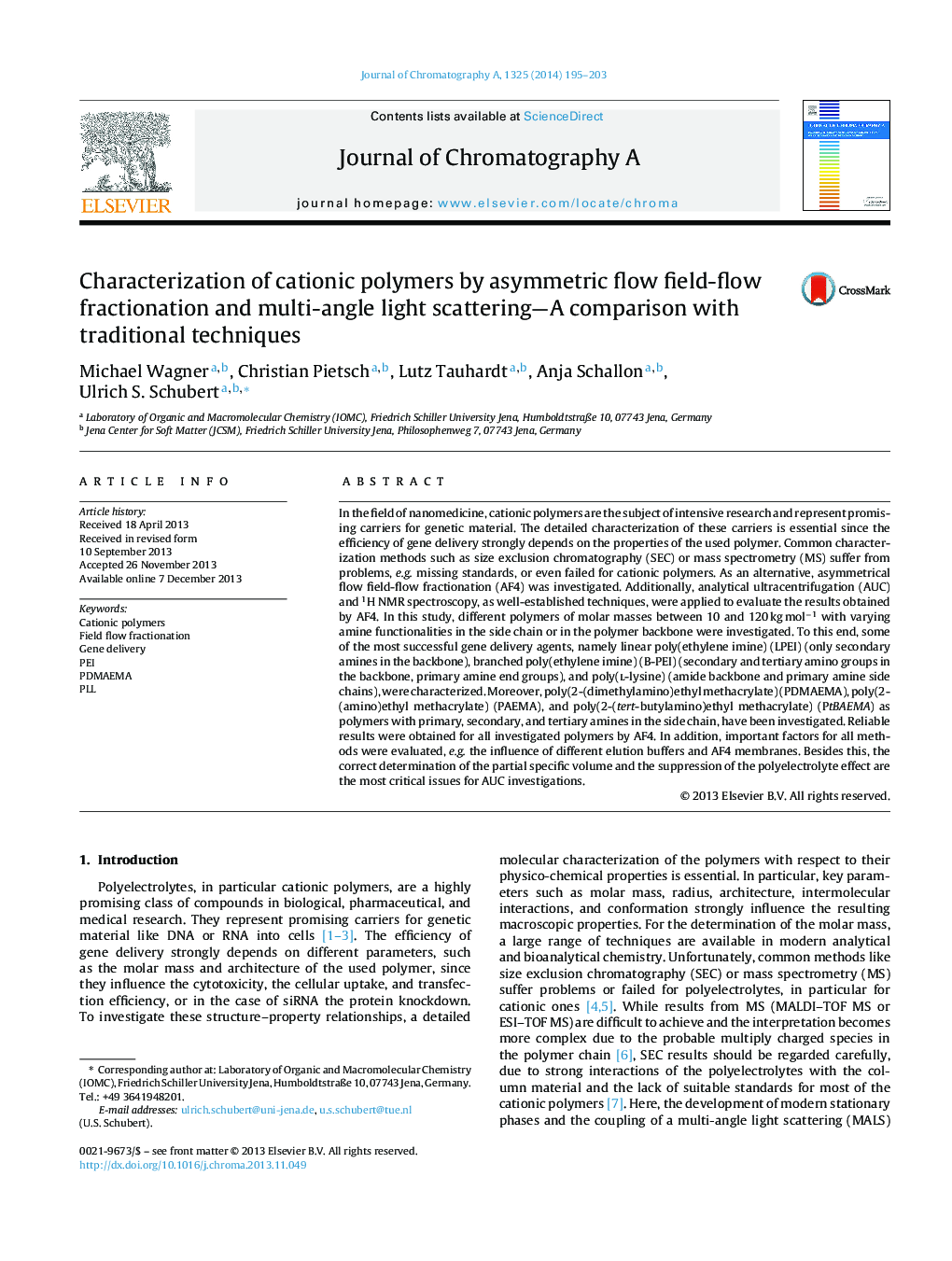| کد مقاله | کد نشریه | سال انتشار | مقاله انگلیسی | نسخه تمام متن |
|---|---|---|---|---|
| 1200434 | 1493601 | 2014 | 9 صفحه PDF | دانلود رایگان |
• Cationic polymers were characterized by asymmetric flow field-flow fractionation.
• Different membranes and eluents were evaluated to find optimal separation conditions.
• Analytical ultracentrifugation, DLS, SEC and 1H NMR spectroscopy were used to evaluate the results.
• Asymmetric flow field-flow fractionation enables the fast and efficient determination of molar masses, polydispersity index values and conformational parameters of charged polymers.
In the field of nanomedicine, cationic polymers are the subject of intensive research and represent promising carriers for genetic material. The detailed characterization of these carriers is essential since the efficiency of gene delivery strongly depends on the properties of the used polymer. Common characterization methods such as size exclusion chromatography (SEC) or mass spectrometry (MS) suffer from problems, e.g. missing standards, or even failed for cationic polymers. As an alternative, asymmetrical flow field-flow fractionation (AF4) was investigated. Additionally, analytical ultracentrifugation (AUC) and 1H NMR spectroscopy, as well-established techniques, were applied to evaluate the results obtained by AF4. In this study, different polymers of molar masses between 10 and 120 kg mol−1 with varying amine functionalities in the side chain or in the polymer backbone were investigated. To this end, some of the most successful gene delivery agents, namely linear poly(ethylene imine) (LPEI) (only secondary amines in the backbone), branched poly(ethylene imine) (B-PEI) (secondary and tertiary amino groups in the backbone, primary amine end groups), and poly(l-lysine) (amide backbone and primary amine side chains), were characterized. Moreover, poly(2-(dimethylamino)ethyl methacrylate) (PDMAEMA), poly(2-(amino)ethyl methacrylate) (PAEMA), and poly(2-(tert-butylamino)ethyl methacrylate) (PtBAEMA) as polymers with primary, secondary, and tertiary amines in the side chain, have been investigated. Reliable results were obtained for all investigated polymers by AF4. In addition, important factors for all methods were evaluated, e.g. the influence of different elution buffers and AF4 membranes. Besides this, the correct determination of the partial specific volume and the suppression of the polyelectrolyte effect are the most critical issues for AUC investigations.
Journal: Journal of Chromatography A - Volume 1325, 17 January 2014, Pages 195–203
